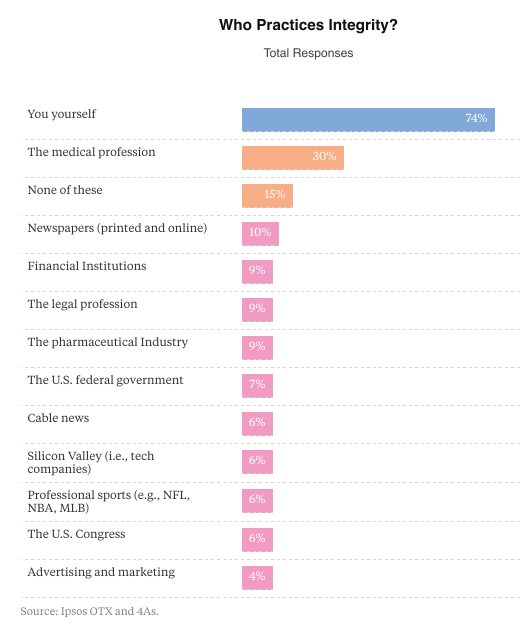Oh, Aunt Sharon's been posting to Instagram again. Looks like she's been trying out this new line of self-warming socks. She loves 'em. They do look pretty good. And how many positive reviews?! Click, Click. Add to cart.
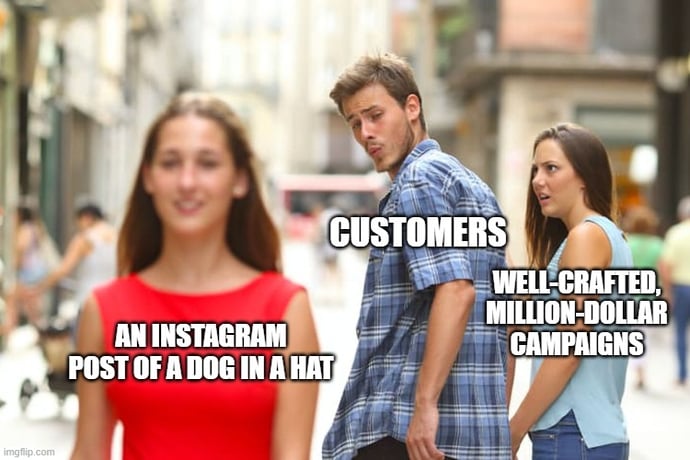
UGC is basically any content that is created by users of a brand; comments, reviews, images, social media posts, hashtags etc. etc. With 90% of consumers saying user-generated content influences their decisions, more than promo emails and search engine results, USG is impossible to ignore.
User-generated content has become a very important part of a modern marketing strategy. In an era where trust is king, consumers are turning to friends and family (or at least influencers who act like their friends and family) to see where they should spend their hard earned dollar.
So, it's not surprising that 86% of companies have implemented user-generated content as part of their marketing strategy. But how do they do it?
Seen as more organic, authentic, and honest, USG can include:
- Blog comments
- Reviews
- Social media comments
- User generated videos or blog posts
- Forums
- Podcasts
Unfortunately, advertising and marketing is generally seen as particularly dishonest. I mean, according to Gallup, the industry is less trustworthy than The U.S Congress and Silicon Valley. Ouch.
So building that trust with consumers is vital.
Plus, it's a young person's game. Shoppers under 30 report a greater influence of UGC in purchasing decisions versus older respondents.
Of those aged 18-29, 97% report UGC has an extreme influence. 84% of millennials say on-site user-generated content impacts their buying decisions. 74% of millennial travellers say UGC has a greater impact on them than professional photos. Enough stats to satisfy you? Okay then, let's get into some examples. Starting with:
User Generated...Reviews
The majority of shoppers read between one and ten reviews before making a purchase decision, and 12% of shoppers say they will read more than 10. Once again, this is all about trust. If your potential customers see your products and services as reliable, they'll follow through with their purchase.
So, it's about encouraging customers to leave reviews where possible. This might be through your website, Facebook page, or third-party sites like Yelp or TripAdvisor. Both on-site and off-site reviews are important.
You might incentivise using coupons, reward points, the chance to be entered into a draw, etc. etc.
Even negative reviews can be useful. Respond to each person individually to show your level of customer service, and willingness to hear customer views and experience. This is all about appearing authentic, personable, and reliable.
User Generated...Contests
Creating unique hashtags for customers to use, and be entered into your contest, is a great way to generate both USG and engagement.
With a UGC hashtag, you can encourage clients to share content on social media, like photos and videos, in order to win prizes.
Sparkling water brand La Croix does this really well. The social media accounts of the 'fruit' flavoured drink are filled with user generated content, from fan art to photos of millennials laughing and enjoying a fruit-adjacent flavoured beverage. The brand then fills its feed with content created by people who genuinely love their product.
They then curate the content, in order to maintain a consistently branded look. Bright colours, sunny landscapes, summer picnics, and beyond.
They achieve this by hosting giveaways of branded merch, including the shirt on the lady below, and by providing interactive displays that customers will want to engage with.
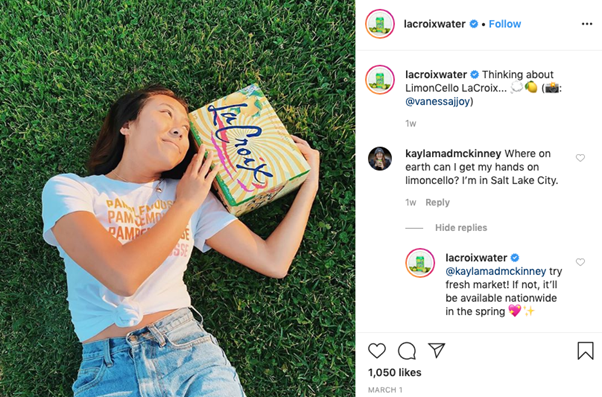
But sometimes, the reward can be recognition by itself.
Glossier has one of the most effective marketing campaigns of the last few years - convincing their customers to buy into a lifestyle, rather than just buying skin care products.
The company aims to make “every single woman . . . an influencer,”
- Emily Weiss, Glossier Founder.
So, by getting the chance to appear as the face of their favourite brand, clients compete to appear on the company's social media channels.
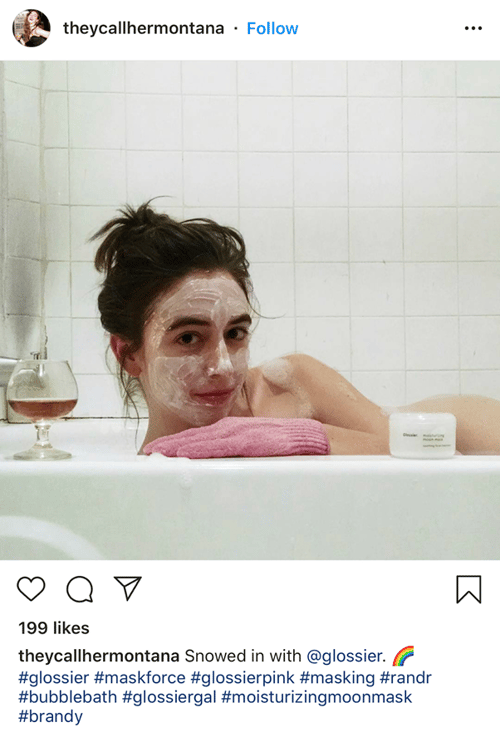
User Generated...Video Reviews
Youtube is a great resource for any user generated content.
Video content can captivate and hold the attention of viewers, far longer than text or photos, in fact Viewers spend 100% more time on pages with videos on them.
Once again, this is all about those damn Zoomers. 85% of the US internet audience watches videos online, with the 25-34 age group watching the most online videos.
So if I want to see what the new Space Raiders potato shapes are like, I can go to Youtube and type in:
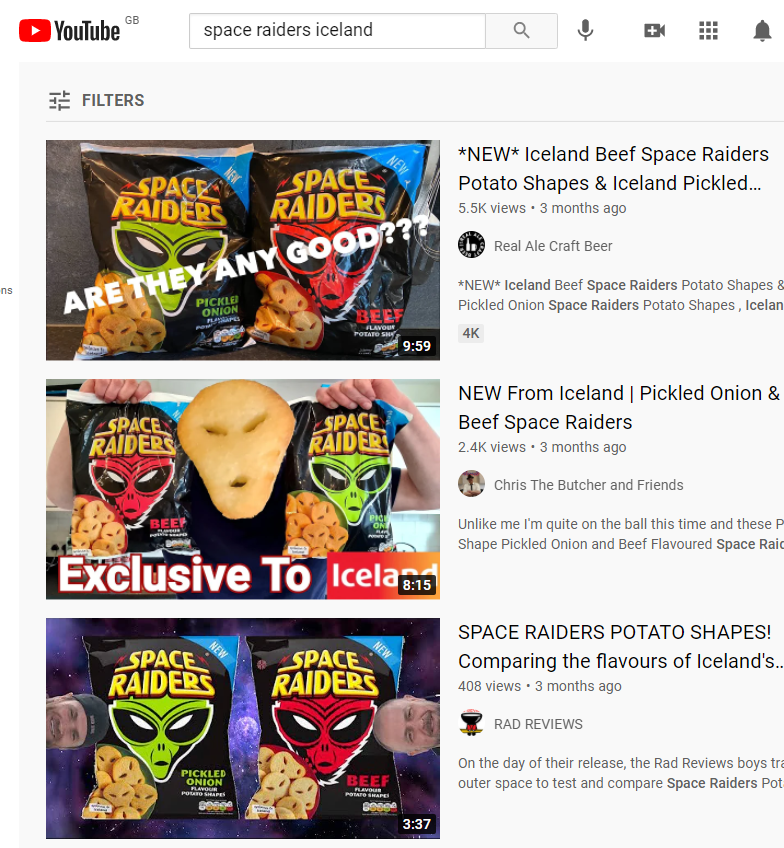
…and get plenty of genuine reviews from people trying them out. Including this particularly charming young man, who I would trust with my life, not only my retro-crisp-flavoured-potato-snacks.
Video user endorsements can carry some serious word-of-mouth power. Users can see real people giving real reviews of products, making their opinion particularly trustworthy. This is compared to text reviews, which might be mistrusted by particularly sceptical users who might see them as potentially written by the brand themselves, or by paid influencers.
User Generated...Seasonal Content.
Air Canada's #ACGiftofHome campaign was a Christmas-focused social media project which allowed Canadians living in London to gather at a bar called the Maple Leaf, to get a taste of the Great White North.
The video showed two AC pilots enter a pub and give round-trip tickets to everyone to visit Canada for the holiday season. They then encouraged customers to post their own stories with the custom hashtag.
With this one campaign, Air Canada covered:
- Brand building
- Building social proof
- Increased engagement
- Accelerated revenue
Pretty snazzy.
Through seasonal UGC, brands can really connect with their consumers, utilising the fuzzy feelings that come from the festive season, and treating their customers to some unique activities. Followers can be asked to share images, submit videos, write testimonials, and participate in contests all circling round an overarching theme.
For example, every year, Starbucks launches it's #RedCupContest, inviting fans to share customised coffee cups with the chance to win a gift card.
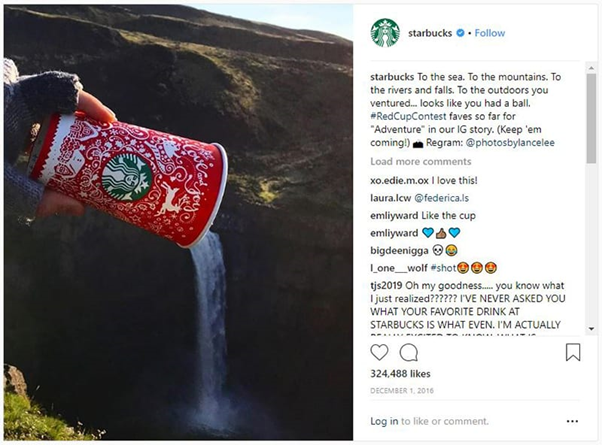
So, not only is the company gaining content from their customers, but the customers have to go out and buy a red cup first. It's about incentivising clients, working alongside the excitement in your customers, encouraging them to create UGC, and positively impacting your sales.
UGC Best Practises.
Right, so I'm guessing you're convinced by this point. But now you've got to do it right. Some best practises for user generated content can include:
- Always requesting permission
- Offering something of value in return for participation
- Being clear with what content you're looking for
- Learn from the content submitted
- Choose the platform/social media channel that works with your campaign
- Using search streams to find content you may have missed
- Crediting the original creator - this is vital!

